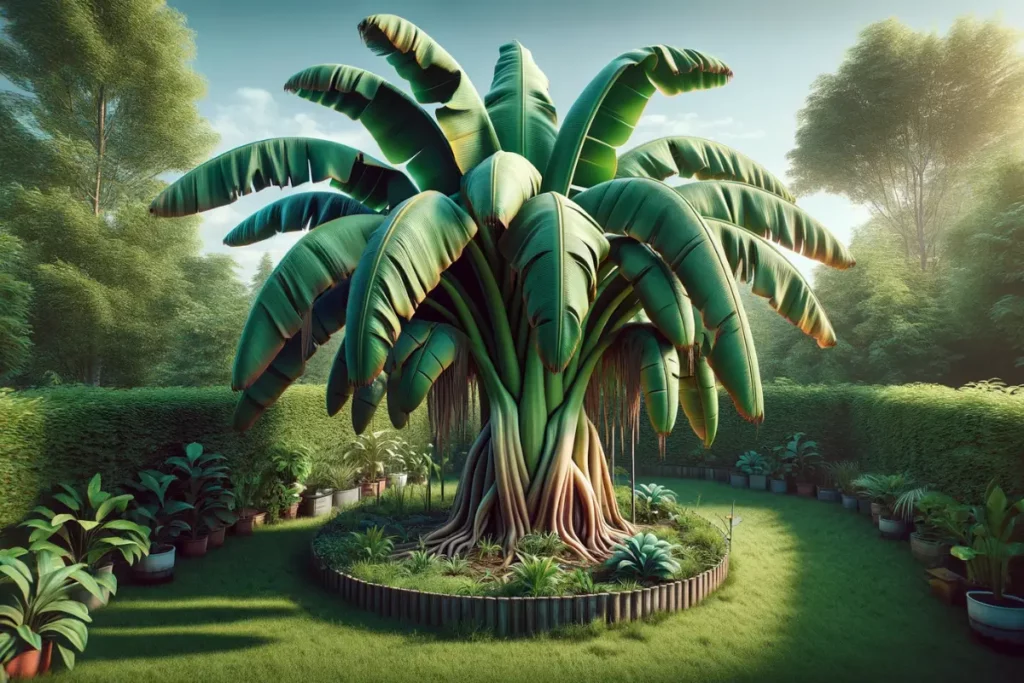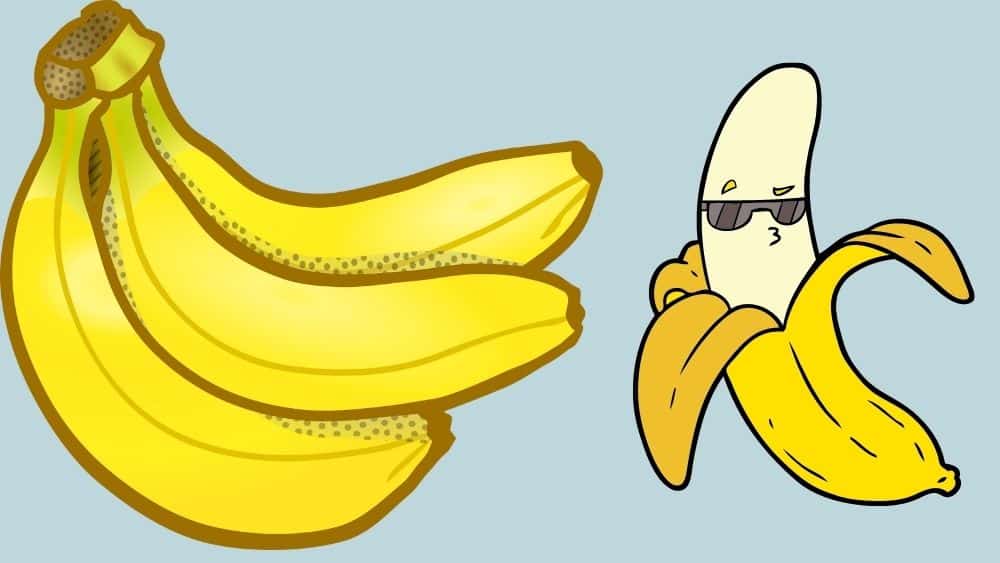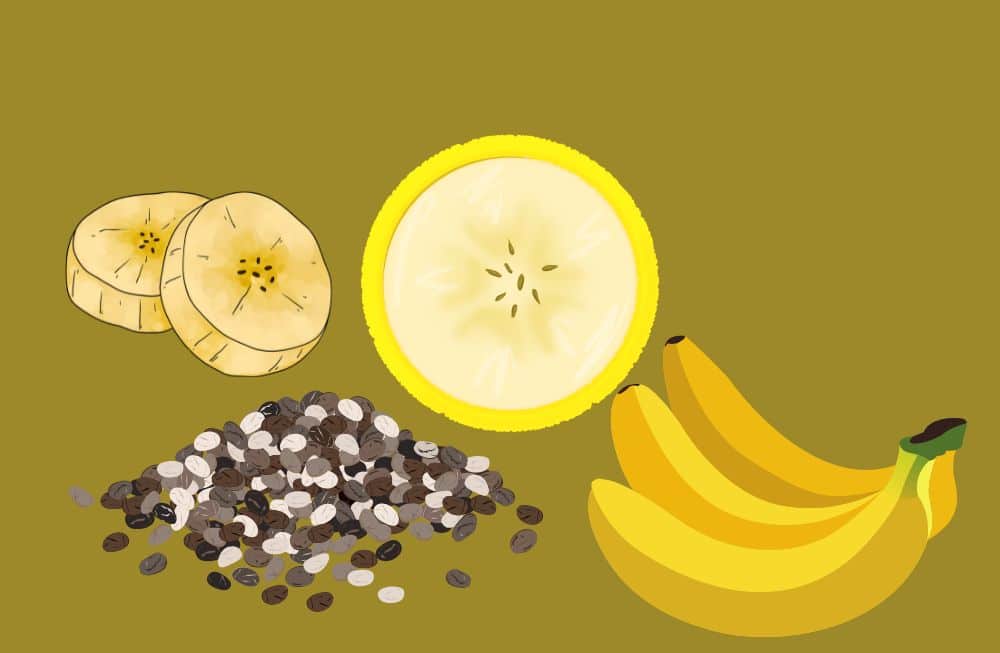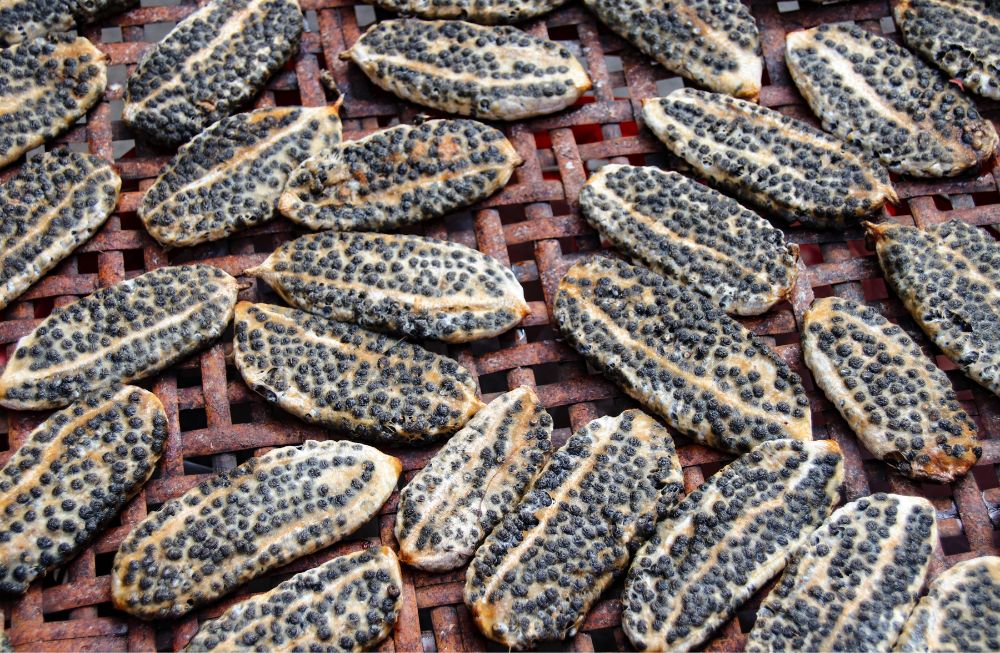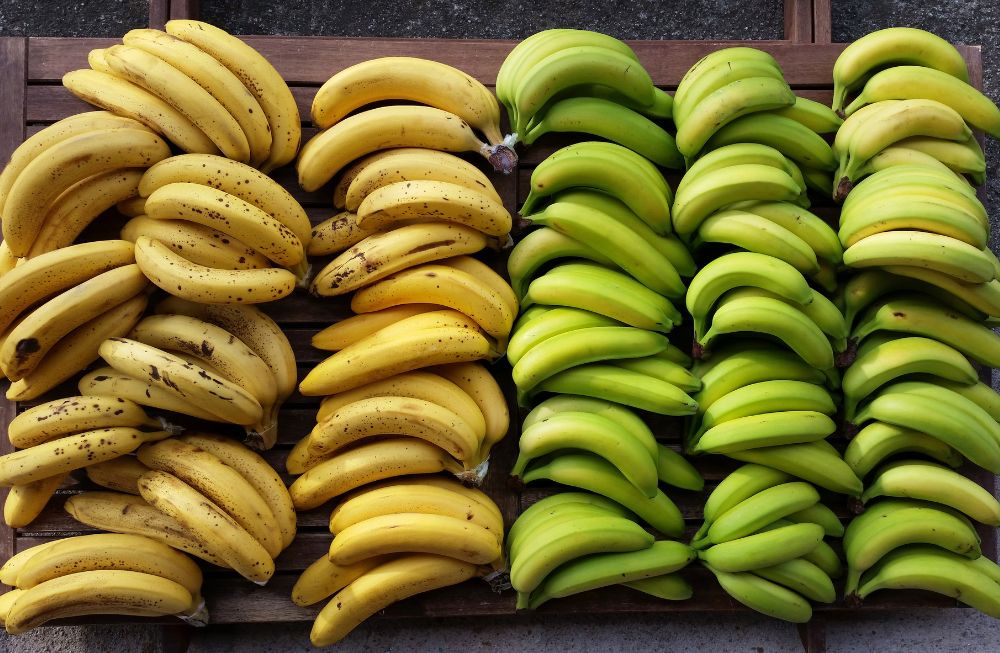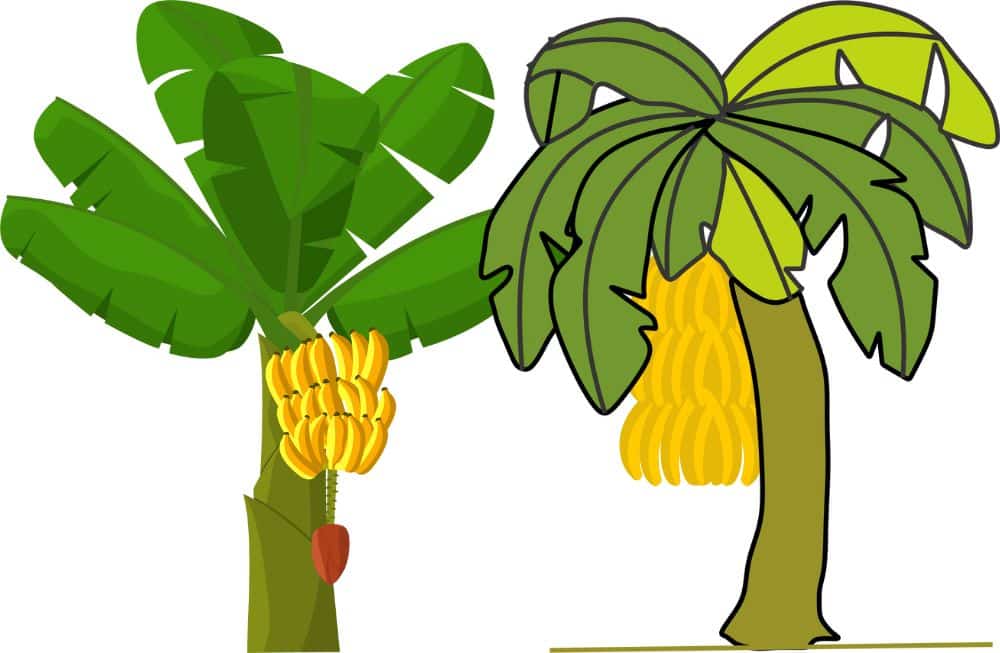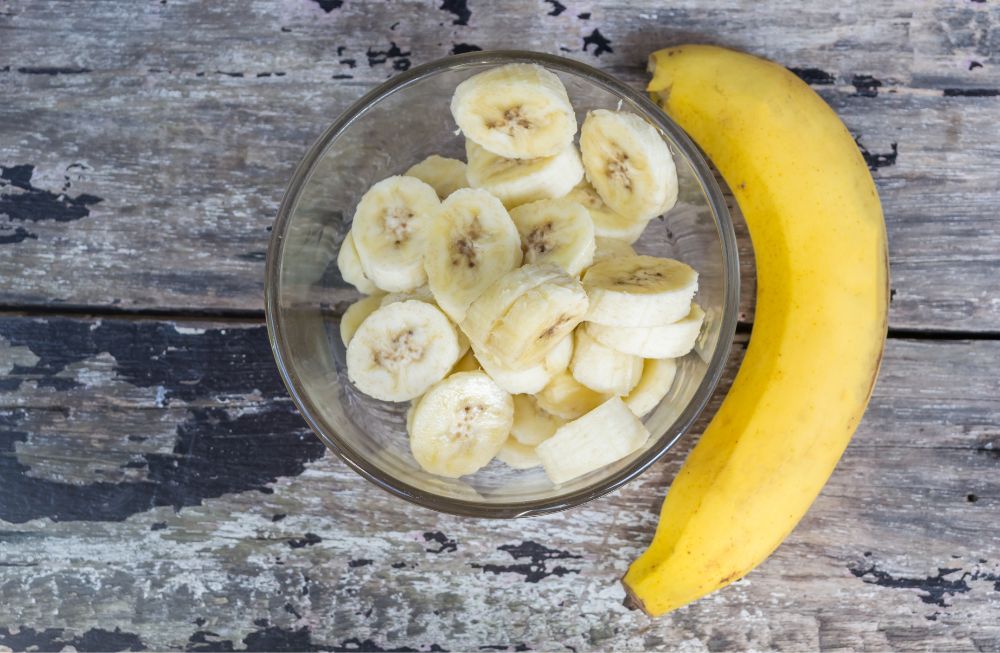Why Are My Banana Plant Leaves Drooping? is a frequently asked question of who has banana plants. One of the common plants that many gardeners enjoy growing in their gardens or indoors is the banana plant. This plant is incredibly simple to cultivate and maintain and doesn’t need any intricate procedures.
The weather or your gardening practices may be to blame for the banana plant’s drooping leaves for a number of different reasons. You should be on the lookout for common causes like inadequate watering, transplant, repotting, relocation shock, a lack of sunlight, being overweight, or natural aging.
We have been asked a lot of questions in the past about this subject. Why Are My Banana Plant leaves drooping? What results in the slow drooping and death of leaves? How can this problem be fixed? In this article, let’s learn more about the particular causes.
Probable Causes Of Droopy Leaves And Solutions
Overwatered Banana Plant
The main factor that contributes to a banana plant’s leaves drooping and dying is improper hydration. Overwatering will result in the entire banana plant swelling, and the leaves drooping from having too much water in each cell. The plant’s leaves then start to turn yellow and weaken before losing the complete leaf.
In the meantime, dry, brittle, brown or yellow, and drooping leaves on plants are also signs of a lack of water. Treatment of the potting soil is the best defense against waterlogging and severe water shortages. Although it must be kept moist to provide water for the banana plant, the potting soil must be well-drained to prevent waterlogging.
How To Revive A Banana Plant
You must adhere to the following guidelines in order to provide the best environment for plants:
- To keep moisture in the soil and stop evaporation, combine mulch and fertilizer in a layer approximately 2 inches thick.
- Instead of using tap water for irrigation since it includes too much chlorine, salt, and minerals, use irrigation water such as filtered, distilled, or rainfall.
- To help plants retain moisture and get nutrients, use organic fertilizers.
- The soil will be protected by mulching with organic materials like leaves, banana peels, straws, pine needles, and coir from the damaging impacts of rain, wind, and sun.
- The coating is particularly useful for preventing water from quickly evaporating into the air in regions with hot, dry temperatures and droughts.
- To keep unwanted bacteria and fungi from attacking the plant, place the mulch approximately 3 inches away from the stem.
Banana Plant Dropping After Repotting
The mechanism of action of banana plants will be disturbed by a quick transplant or habitat change, resulting in the leaves drooping. The plant’s root system takes some time to adjust to the new environment when you put it in a new pot with new potting soil. Specifically, while moving to a new pot or transplanting, certain roots will also sustain harm.
In order to avoid placing undue stress on banana plants, you should pay close attention to the following facts before transplanting:
- Use a tool to loosen the dirt and remove any extra soil from the pot’s surface. Prevent having the soil attached to the roots by keeping it loose.
- To get rid of any soil, carefully lift and tap the banana plant.
- To prevent bacteria and fungi from the old potting from attacking the new surroundings, clean the pot and fill it with fresh potting soil.
- The plants should be put in the new pot, and the soil should be applied as previously.
- Use compost, and cover the top two inches of the earth with mulch.
- After the soil has become compacted, water slowly and add extra.
Temperature And Humidity
For example, a temperature differential between indoors and outdoors that is too great can cause undue stress. Sometimes the abrupt change in humidity makes plants’ leaves droop. If you need to shift plants from inside to outside, the solution is to give them a few minutes to a few hours each day to become acclimated to it. To avoid leaf shock, dehydration, and drooping, spray the leaves to temporarily retain moisture.
Lack of Sunlight
Banana plants are a type of tropical forest plant, as you are already aware. They, therefore, prefer six or more hours of direct sunlight. However, if they get at least 4 hours of sunlight each day, they can still be growing nicely.
For plants to create sugar through photosynthesis, sunlight is crucial (the main source of energy). Without sunlight for photosynthesis, plants would lack the energy necessary to sustain the growth of their leaves, stems, and branches. As a result, banana plants’ leaves will droop, weaken, and eventually fall off.
You should position banana plants facing south for the most sunshine. The optimal temperature range is 57 to 100 degrees Fahrenheit. You should transfer the potted plant indoors or use a greenhouse if the temperature is too high or too low to prevent thermal stress.
Extreme Weather
Place banana plants in a south-facing direction or along a south-facing wall if you live in a colder area for the most sunlight and warmth. Bring the banana plant indoors if it gets colder than 57°F.
Again, attempt to do this gradually to acclimate the banana plant to the humidity and warmth of your home.
While a lot of sunlight might be beneficial, it’s possible to have too much of a good thing. Banana plants, for instance, can quickly dry up and occasionally burn in hot, dry climates with temperatures above 100°F, such as Arizona, Nevada, and California. Typical effects of this weather include wilting, browning, and drooping leaves.
Common Pest And Diseases
Another typical reason why plant leaves are damaged and fall off is due to pests and insects. They attack the leaves directly, puncturing the surface with tiny holes. More hazardously, they conceal themselves among the leaves and scavenge the sap, weakening the stem and preventing it from supporting the leaves and branches.
Because these areas are the perfect hiding places for insects and vermin, you should routinely clear the leaves and cracks between the branches. In order to prevent fungal and pest eggs, remove any brown or white patches on the leaves. Neem oil can be used to routinely clean the leaves, and insecticide can be used to get rid of them before your plants are harmed.
Aphid insects
These pests result in curled and shriveled foliage as well as the transmission of additional diseases that can harm any fruit that is produced.
Black weevils
If you notice jelly-like sap leaking from the plant, black weevils may be present; insecticides can get rid of them.
Nematodes
The fruit and plant of the banana tree will rot from this pest, which is the most frequent.
Sap-sucking insects
Banana trees frequently suffer from small red spider mites and white mealybugs.
Scarring beetle
A pesticide can get rid of this pest, which attacks clusters of the plant’s fruit.
Tiny thrips
The fruit of the plant will have split and stained peels due to this bug.
Banana trees are prone to a number of diseases in large plantations that are managed with commercial fungicides and insecticides. Look out for root rot, leaf-spot disease, wilt, and powdery mildew with indoor banana trees in pots.
How To Keep A Banana Plant Healthy
Direct sunlight and potting soil with a low salt content are essential for the growth of banana leaf plants. It requires a lot of water as well, but owners must be careful not to overwater it because this might cause root rot. Here are a few factors you should look into to make your banana plants healthy.
Find The Right Shade of Light
Most species of banana plants prefer full daylight, which is characterized as at least six hours of direct sunlight on most days. Certain types, however, are more prone to scorching and perform well in some shade.
Types Of Soil Banana Trees Grow Best On
These plants prefer deep, organically rich soil that drains well and has a pH that is somewhat acidic. Typically, they have a low tolerance for soil salt.
Amount Of Water Needed
Banana plants need a lot of water and moisture in the air because they are tropical and originated in rainforests. They thrive when planted in clusters that are somewhat close together since this keeps the leaves moist. Don’t overwater plants; this can lead to root rot.
Maintain Temperature and Humidity
These plants prefer moderate temperatures; they do not fare well in hot or cold climates. Temperatures between 75 and 95 degrees Fahrenheit must always be maintained for banana trees, even the hardy, cold-resistant varieties. Dry weather and cold temperatures might cause the plants to swiftly wither away. Mist the leaves every day to raise the humidity level.
Types Of Fertilizer
Banana trees consume a lot of food. Throughout the growing season, use a balanced fertilizer on a regular basis while adhering to package directions. Also, add compost each year to the soil to increase the amount of organic matter.
Pruning
The banana tree will have one main stem if it is pruned before it produces fruit. After it has grown for six to eight months, remove one sucker (small shoot at the base of the stem). This plant will replace the main stem in the succeeding growth season. Once the fruit has been removed, trim the main stem to 2.5 feet. In a few weeks, cut off the remainder of the stem, leaving the replacement sucker alone.
Propagating Banana Trees
The division is the most effective technique of dissemination. Use a sharp spade to detach the suckers from the rhizome (horizontal underground stem) in order to divide banana plants. After removing a sucker from the parent plant, give the rhizome section’s surface a few days to finish drying out. It will be prepared to be replanted at this time in any suitable place.
Potting and Repotting Banana Trees
Banana trees can thrive in pots, but for best growth, they usually require at least a 15-gallon pot. Use a loose potting mix that is rich in organic material and check to see if the pot has drainage holes. You may bring your banana tree inside to protect it from the cold and severe weather if you pot it, which is one benefit.
However, because they will use up the restricted soil in their pots more quickly than banana trees planted in the ground, banana plants in pots typically require more water and fertilizer. Moreover, they might not produce fruit and are unlikely to grow to their fullest potential. Yet, a lot of people favor them for their beautiful foliage. Container banana trees should be divided and replanted every three years, with any suckers from the parent plant being removed.
What Does An Overwatered Banana Plant Look Like?
You have an overwatered banana plant if it develops yellow or curling leaves, softened stems, brown edges, stains on the leaves, leaves that fall off, or mushy soil.
One thing that all gardeners agree on is that if your plant has yellow leaves, look for root rot. The same holds true for banana plants. Why? Long-term saturation of the soil with water will smother the roots, leaving the leaves of the banana plant without water or nutrients.
Although it might seem reasonable that the leaves would begin to curl as a result of underwatering, overwatering is actually a common cause of this. On the other hand, too much water will stop the roots from working properly. They won’t be able to hydrate the leaves if they are already dead. The same goes for softened stems and leaves falling off.
How Often Should You Water Banana Plants
Every two to three days, water newly planted banana plants. Before watering again, wait until the top inch to one inch of soil is completely dry. It is not necessary to moisten the soil if it is still damp at the top. Water the plant slowly and deeply, making sure the soil drains properly.
Banana plants will require less water during the cooler months. When the temperature falls below 50 degrees Fahrenheit, banana plants typically stop growing, requiring much less irrigation.
Why Do My Banana Plant Leaves Keep Bending?
They will droop because of the weight of the leaves and the inability of the stem to support them. Rain or strong winds can also cause plants’ leaves to droop or snap because of their heavy weight.
The branches of banana plants will get weaker due to the cold and dry air, making them more prone to breaking. To keep the trunk healthy and withstand the impacts of the weather, you must add the required nutrients. To prevent breaking branches and causing significant damage, you should also remove old branches or trim overly huge leaves.
FAQs
Are banana trees simple to maintain?
Yes, banana trees are easy to grow if given the correct conditions (indoors or outdoors). Providing your banana tree with appropriate water and sunlight can help it develop strongly.
What is the height of dwarf banana trees?
Given that banana trees can grow to be rather tall, the dwarf Cavendish banana, which reaches a height of 8 to 10 feet, is a wise choice.
Can a banana tree be grown inside a home?
Yes, similar to the papaya plant, a banana tree can make a great houseplant, but you shouldn’t count on it to bear fruit. The plant requires tropical outdoor climates in order to yield fruit. A banana tree might produce fruit in about a year under ideal circumstances. Although not all varieties of banana trees produce edible fruit, make sure the one you choose to plant will.
Can a banana be used to grow a banana tree?
No, although a banana you purchase from the grocery store may contain a few microscopic “seeds,” you cannot produce a banana from those seeds. Bananas used for commercial purposes have undergone genetic modification to prevent seed production. Try trying to grow a tree from the seeds of any wild bananas you discover.
Conclusion
These plants don’t require pollination and aren’t difficult to maintain. You can grow a healthy banana plant by providing it with appropriate light, nutrients, and water. If you act quickly, your banana has a good chance of recovering. Therefore as soon as you notice the signs you can read this article “Why Are My Banana Plant Leaves Drooping?” and save it

